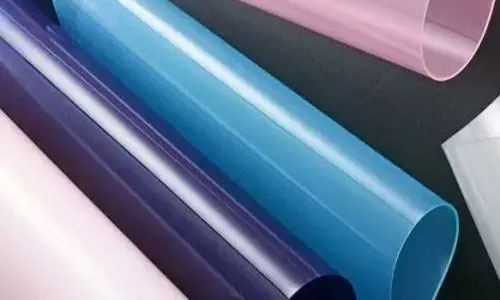Types of wrinkles include folding, longitudinal wrinkles, transverse wrinkles, and linear wrinkles.
The occurrence of film wrinkles indicates that the smoothness of the film has been disrupted to a certain extent, which is not allowed for any application of thin films. It not only affects the appearance of deep-processed products but also leads to quality defects in use, such as missing coating or printing.
Folding: also known as bottom wrinkles or initial folding, refers to the wrinkles that appear at the beginning of film winding on the core. Since most folding wrinkles are irregular dead wrinkles, the film is generally considered as waste when the folding occurs.

The degree of folding is an important indicator reflecting the slitting technology level of a film company. The length of folding in films produced by different companies varies from a few meters, tens of meters to hundreds of meters. The more severe the folding, the greater the losses for the company and users. Therefore, each film company is committed to improving the research on slitting folding.
The following methods can be used to solve bottom wrinkles:
The wrinkles near the core cannot be stretched out, which is largely related to the pressure of the contact roller of the slitter. It has been proven that increasing the pressure of the contact roller leads to more wrinkles, while reducing the pressure reduces wrinkles. The increased air volume between film rolls increases the gap between films, reducing friction and helping to reduce wrinkles.
When improving wrinkles, the control of the winding tension must be considered. If only the winding pressure is considered, the set value of the initial pressure should be very small. In the case of special circumstances, such as mid-speed reduction, defects such as deviation may occur due to low pressure. Therefore, the setting of the tension curve is also very important, and the winding pressure and tension need to be properly coordinated.
The pressure near the core cannot be reduced indefinitely, because if it is too small, the winding inside the film roll will be too loose, resulting in star-shaped patterns on the end face and transverse wrinkles in the film. Therefore, when setting the pressure curve, it should be adjusted to the point where there are no star-shaped patterns on the end face of the film roll and wrinkles are minimized.
Under the same parameter conditions, film rolls with longer specifications are more prone to wrinkles than those with shorter specifications. This indicates that the longer the specifications, the worse the exhaust effect. Moreover, because the middle strength of long-specification paper tubes is relatively poor, slight bending of the paper tube during the slitting process can cause long-term wrinkles that are not dispersed in the middle of the film roll. In addition, when the paper core is long, as the axis of the film winding under high-speed rotation during slitting, its straightness, concentricity, strength, and surface smoothness are the most important indicators. Generally speaking, the longer the paper core, the more difficult it is to guarantee the straightness and concentricity.
Therefore, the quality of the paper core is very important, and the inspection of the paper core should be improved. If any abnormality is found during the slitting process, the paper tube should be replaced in a timely manner. Furthermore, under the same parameter conditions, film rolls with shorter specifications are more prone to deviation and require higher winding pressure. Therefore, on the adjustment of wrinkles, the pressure for long-specification film rolls can be appropriately reduced to reduce wrinkles, while for short-specification film rolls, the pressure needs to be increased to prevent deviation.
For products that are slit on the inner and outer sides of the slitter, transverse wrinkles may occur due to the different angles (angles of wrapping) when entering the winding pressure roller. Generally, the pressure is reduced in the slitting process to minimize wrinkles. Effective adjustment of the slitting tension and pressure for different models of products can effectively eliminate the generation of transverse wrinkles.
The degree of wrinkles on the inner and outer sides of the slitter may also be different. Pay attention to the differences in wrinkles between the inner and outer sides of each slitter. If the differences are significant, the specifications that are prone to wrinkles should be slit on the side that is less likely to produce wrinkles during the slitting process.
Contact: Pamela
Phone: +86 189 6365 3253
E-mail: info@industryprocess.com
Whatsapp:+86 189 6365 3253
Add: Yajing Industrial Park, No. 59 Shuangjing Street, Weiting Town, Suzhou Industrial Park
We chat
